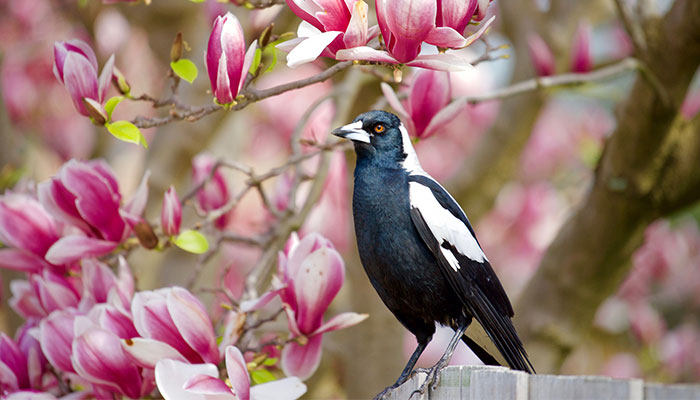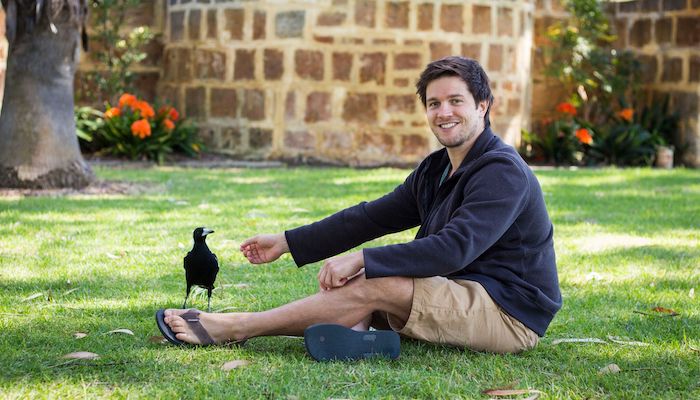Magpie swooping behaviour is associated with their breeding season – this includes the periods when they are nest-building, mating, incubating eggs and looking after nestlings and fledglings.

In Sydney, swooping behaviour can begin in August and is usually in full swing in September when the magpies start breeding.
If there are active nests in an area, then there is a higher risk of being swooped. However, it is important to note that only 10 per cent of magpies swoop. I’ve been carrying out magpie research for over ten years and have never been swooped!
We don’t know for sure, but magpie swooping seems to be related to defending the nest against threats. And it’s not just humans that get swooped by magpies – other bird species, such as ravens, and other animals such as dogs, get swooped by magpies as well.
In most cases, swooping happens when a passing human or animal could be considered a threat to a young magpie or a magpie egg.
We know that swooping generally happens near active nests – that is, nests that have either eggs or nestlings in them. This is the time when magpies are most vulnerable and is the reason why swooping has been suggested as an anti-predator adaptation.
Magpies are the most notorious swoopers and may persistently target a particular person, while ignoring others.
Australian magpies, renowned for their intelligent behaviour and complex songs, hold a special place in many Australian’s hearts. This is perhaps best showcased by the Netflix movie Penguin Bloom, and the popular social media channel Magpie Whisperer.
I’m using the magpies as a study species to answer questions central to our understanding of cognitive evolution.
One of the main hypotheses for the evolution of intelligence, the social intelligence hypothesis, predicts that the challenges of living in complex social environments selects for greater intelligence.
In line with this, my colleagues and I found a relationship between group size and cognitive performance in magpies – we found that magpies living in larger groups performed better in a series of cognitive tasks.
We are now carrying out a series of additional experiments to determine what is driving this relationship. For example, we are using social network analysis to see if it is the number and strength of social relationships that drives cognitive development.
We are also researching cognitive senescence – the gradual decline in cognition with age – in the magpies. Cognitive senescence is something that is well documented in humans, but largely unknown in wild animals.
Swooping is just one aspect of behaviour in these amazing birds, we’re hoping that our work can help us learn more about their lives.
What to do if a magpie swoops at you
Magpies are the most notorious swoopers and may persistently target a particular person, while ignoring others. During spring, a magpie will sometimes swoop on a person, clacking its beak. This only happens during the nesting season, which lasts a few weeks. While alarming, it is usually just a warning, in an attempt to defend its family.
If you are swooped:
- Do not stop – walk away quickly
- Eye contact will make the magpie less likely to swoop
- Wear sunglasses on the back of your head
- Wear a hat with a pair of eyes drawn on the back
- Wear a bicycle or skateboard helmet, or even an ice cream container or cardboard box
- Carry an open umbrella or stick above your head (but do not wave it).
Tips suppled by the NSW Department of Planning and Environment.

Dr Ben Ashton, pictured, is a behaioural ecologist in the Macquarie University School of Natural Sciences.






